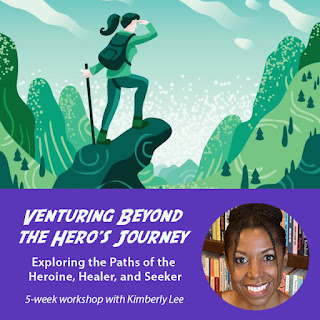By Kimberly Lee
You’ve seen the iconic poster—a woman in profile, her right arm raised in a fist while her left hand rolls up her sleeve. She wears a blue work shirt and a red, polka-dot scarf tied around her temples. Eyebrows immaculately sculpted, eyelashes done up, red lip-stick topping it all off.
During the height of the pandemic, my cousin sent around a photo she’d unearthed, of our grandmother with a work crew, wearing that same blue shirt. When I asked my mother about it, she said my grandmother was part of a World War II “ladies’ crew,” and that her work had to do with ball bearings or something. I’d seen the poster a million times, but never knew my grandmother had been a “Rosie the Riveter.” I set out on a mission and eventually found a mug online representing her in this role.
My grandparents were part of the “The Great Migration” of Black people from the Deep South to the northern and western states that took place in the early 1940s. Although their movement was within the same continent, it was epic, because their choice to undertake the journey deeply impacted my quality of life, even though I wouldn’t be born until decades later. I heard about this journey in detail from my grandfather, yet I recently wrote about it from the perspective of my grandmother, who I never knew—she passed away well before I was born. In “Departure,” I take on her voice: “The air is different here. Lighter. It could be that I’ve never been this close to an ocean, never felt the calm mist tickling my skin. Or maybe this is what it feels like to breathe easy, and free.” Those lines were my attempt to capture the emotional journey, the change that seems to be coming from outside conditions but is actually burgeoning from within. Because while my grandparents’ movement was definitely physical, through numerous states from one end of the country to the gorgeous Pacific Coast, I know that faith, perseverance, and fortitude were the true inner gifts of the journey, the qualities they silently nurtured and developed in their own hearts to have the fortitude to make the trip.
Although the narrow definition of a journey is geographical, a movement from point A to B, an emotional component is always present. The richness of the inner adventure compels us to see the journey as a metaphor for countless situations, no physical change of place required. We face challenges, find allies, and overcome obstacles on the way to a final destination. We experience personal growth and development, chances to rise to the occasion, and strength arising from finding our innate gifts. We triumph, determining for ourselves what success truly means.
Joseph Campbell described the well-known archetypal pattern of the hero’s journey in The Hero with a Thousand Faces. While Maria Tatar’s recent The Heroine with 1001 Faces might be seen as a response to that work, it goes beyond it by expanding our view of heroism to include qualities and narrative arcs centering the power of women to effect change. Similarly, the journey of the healer and seeker, along with the journey of integrity, offer fruitful ways to view the universal struggles and joys we face on life’s trajectory. On each of these paths, even if there is physical relocation, the deeper journey always takes place within. The process may be as silent as caterpillars transform-ing within the confines of silky, stationary cocoons. They emerge exquisite and renewed—altogether new creatures—as a result of the inner journey. Containing invisible remnants of the past yet exploding with flight into the future, they affect their own destiny and that of those to come. We are those butterflies.
6th Century Chinese philosopher Lao-tzu said, “The journey of a thousand miles be-gins with a single step.” Through the lens of the heroine’s path, the virgin’s promise, and other narratives, the thousand-mile journey becomes our lives, splayed out across the years of our existence. We look back to see where we’ve been and how far we’ve come, then venture on, knowing that just as fog clears when we move forward, our next steps will be revealed.
Like my grandparents, we don’t need exact certainty to enter uncharted territory. Whether our movement is physical or centered on the journey within, we only have to believe in the possibilities and stay awake to the signs that illuminate our path, guiding us to precisely where we need to be.
***
Join Kimberly this summer for a fun and interactive exploration of long-established and recently-outlined journeys. In Venturing Beyond the Hero's Journey: Exploring the Paths of Heroine, Healer, and Seeker, a five-week writing workshop starting June 12th, we’ll investigate these narratives through their appearance in literature, film, poetry, videos, podcasts, and the lives of public figures. Through creative writing prompts, and other interactive exercises and activities, we’ll discover how aspects of these paths exist within our lives and can be used to inform and enrich our own writing projects.










0 comments:
Post a Comment